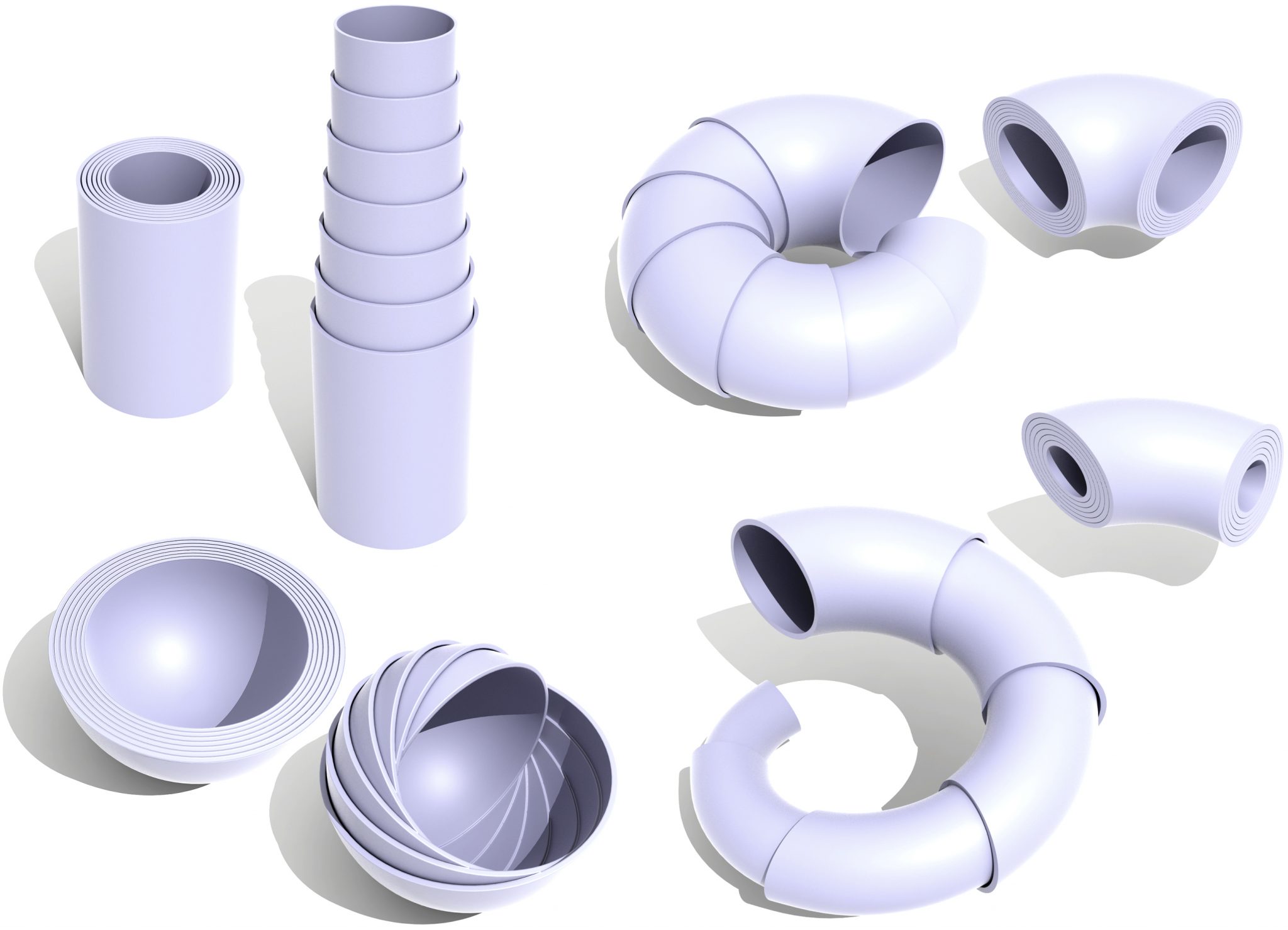But researchers at Carnegie Mellon University (CMU) have developed a system that may make robot design a lot simpler. The robot design algorithms take suggested shapes and convert them into complex, telescoping structures that can twist, turn, extend, and restrict. The system could help design shape-shifting robots of the future.
“Our core method takes a curve in 3D space, and produces a telescope whose shape follows that curve as closely as possible,” Chris Yu, a CMU PhD student who co-led the project, told Digital Trends.
To design a structure, users simply draw lines to represent their desired shape. The algorithms then optimize the lines into a network of curves, which they then convert into functional telescoping shapes that can pack into themselves like turtles in shells. Using this system, the researchers have created complex structures like dinosaurs and trees.
Telescoping robots have a number of advantages. For one, they’re easier to transport and store, since the robots can retract and take up less space when not in use.
“This would be useful around the house, since it wouldn’t be getting in your way,” Yu said. “It would also make transporting robots much easier, since you could pack it into a small box or something similar. And you would get all of this without trading away functionality, since the robot could expand itself to its normal size when needed.”
And telescoping enables a robot to change its shape on the spot to suit various scenarios. If a search-and-rescue robot were designed to telescope, it could adapt to different situations, retracting to squeeze through a tight spot and extending to reach over an obstacle.
“So, for instance, you could imagine that there’s a pile of fallen rocks in front of you, and a person trapped behind the rocks,” Yu explained. “It’s too difficult to climb over the rocks, and you can’t just reach straight through them. But if your robot could reshape its straight arm into a circular one, it could reach over the top and save the person.” See the video above for a visual example of this shape-shifting in action.
The researchers presented their findings this week at SIGGRAPH Conference on Computer Graphics and Interactive Techniques.



